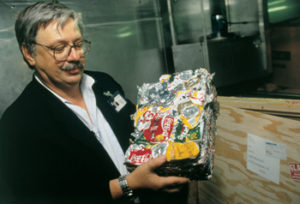
To decrease Cruise liners environmental impact, CLIA members have stopped using single-use plastics on their vessels. Cruise ships also recycle, on average, 60 percent more waste per person than the average person recycles on shore each day, adding up to more than 80,000 tons of paper, plastic, aluminum and glass recycled each year.
Some ships can even repurpose 100 percent of the waste generated onboard — by reducing, reusing, donating, recycling and converting waste into energy.
“Cruise ships use some of the most innovative recycling, reducing and reusing strategies in the world,” said Donnie Brown, vice president of maritime policy, Cruise Lines International Association (CLIA). “Through industry efforts, less than 1.5 pounds per person per day in unrecyclable waste is generated on cruise ships, compared to the average of 4 to 5 pounds per person per day on land in the United States.”
Some of the cruise industry’s best practices include:
• Advanced recycling practices
CLIA members have adopted the Cruise Industry Waste Management Policy, which is one of the most comprehensive and advanced set of practices for waste disposal in the marine environment. Member lines have committed to reducing plastics disposed in landfills and increasing recycling volumes by separating plastics and recycling whenever possible. Further, the cruise industry invests in research to identify new ways to reduce the amount of plastics brought on board ships through sourcing and product selection.
• Crew contributions
Due to the efforts of highly trained waste management professionals onboard, the per person trash for disposal is less, and the recycling rate is higher, on a cruise ship than if those same travelers vacationed on land—or even stayed home. Cruise lines employ dedicated environmental officers who are responsible for compliance. Member lines also incentivize crew to reduce waste, and crewmembers at all levels bring garbage to the recycling room where they hand-sort everything into a variety of bins.
• Passenger participation
The cruise industry actively encourages passengers to join environmental stewardship efforts to reduce waste and offers numerous onboard resource conservation programs. Some cruise lines have implemented separate collection trash receptacles for recycling drinking containers. Other cruise lines offer environmental education classes to staff and guests, ensuring increased attention to what each passenger can do to improve environmental sustainability.
To learn more about CLIA’s efforts to reduce, reuse and recycle visit: https://www.cruising.org/about-the-industry/research.



